The Québec maritime Blog
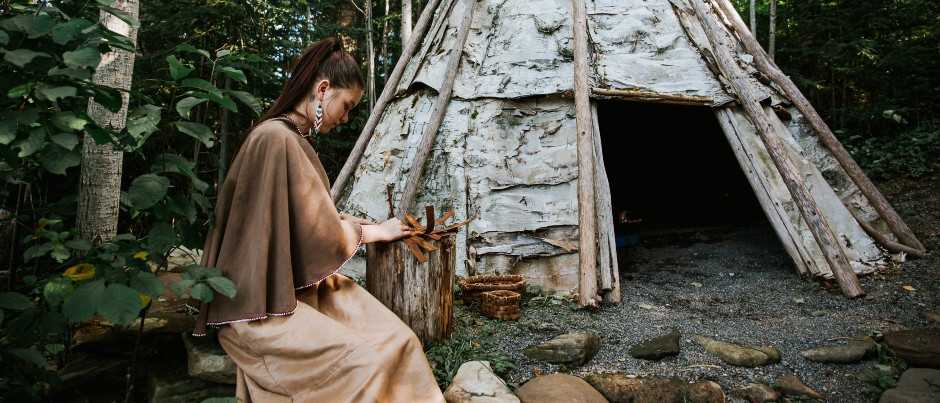
-
Micmac Interpretation Site of Gespeg
Audet Photo
First Nations People in Gaspésie: Meet the Mi’gmaq
When you visit Gaspésie, you’ll notice that some places have unique names based on Mi’gmaq words. The Mi’gmaq people historically referred to themselves as L’nu (or Lnu); the term Mi’gmaq (or Mi’kmaq) means “the family” or “my allies/friends.” They’re “people of the sea,” since they’re the original inhabitants of the Atlantic region in Canada. Present on the territory of Gaspésie (Gespe’gewa’gi) for over 10,000 years, they were the first Indigenous people to establish contact with the European newcomers in the 16th century, to whom they provided help related to their fishing and boating skills. Discover this fascinating people and their contribution to contemporary Gaspésie.
The Valley
At the gateway to Gaspésie you’ll encounter the Mitis area, from the Mi’gmaq words miti, meaning “poplar,” and sipo, meaning “river,” so named because the banks of the Mitis River are very wooded. The Wolastoqiyik (Maliseet) fished for eels and salmon at the mouth of this river. A navigable route, it served as a link between Chaleur Bay and the St. Lawrence. It’s presumed that the Wolastoqiyik and Mi’gmaq met along its banks.
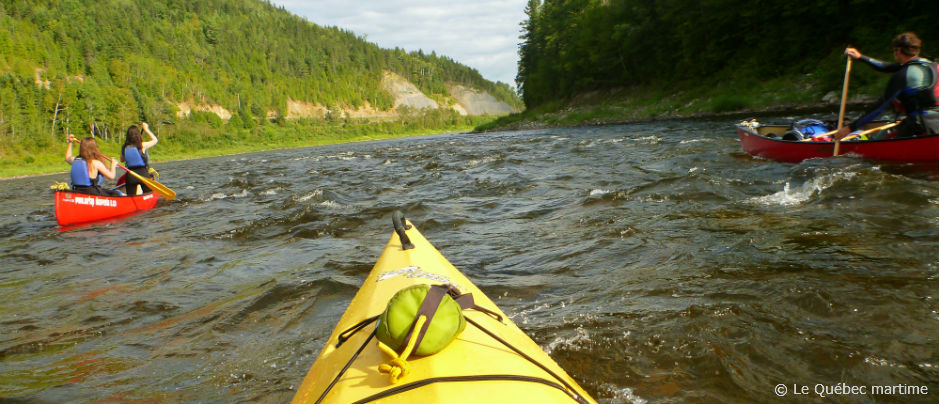
Next, you’ll come to the Matapédia Valley, named after the Matapédia River. Its name is derived from the Mi’gmaq words mata, meaning “junction,” and pegiag, which means “river.” This river is popular for salmon fishing, but you can also enjoy various other water activities here with Nature Aventure. There are a few towns in this area with Mi’gmaq names, such as Sayabec (from the words sak, meaning “full,” and pegiag, meaning “river”), Amqui (from ankwi or amgoig, meaning “the place to have fun”) and Causapscal (from goesôpsiag, meaning “stony bottom,” likely referring to the rocky river bed of the Causapscal River). This valley is also home to another salmon river, the Patapédia, from the Mi’gmaq word patapegiag, which means an “uneven, capricious, impetuous current.”
Chaleur Bay
The Chaleur Bay area is home to two First Nations communities, Listuguj and Gesgapegiag.
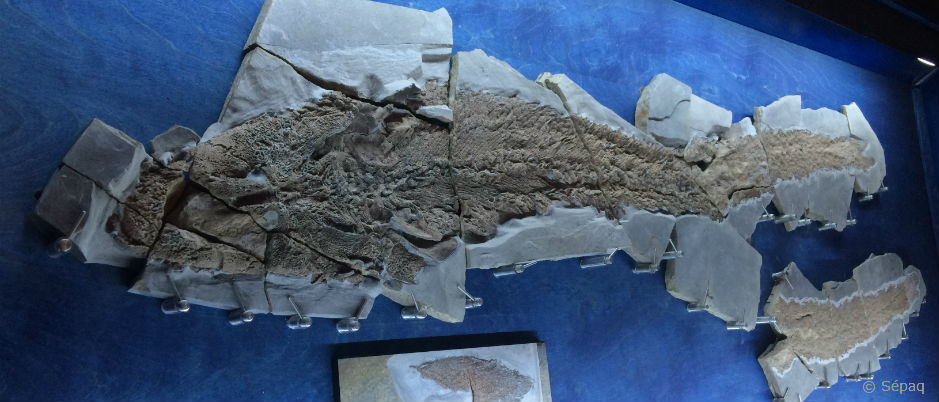
Listuguj, which means “river of the long war,” “small tree” or “beautiful river,” is the origin for the name of the Restigouche River, which witnessed the Battle of the Restigouche. (You can visit the Battle of the Restigouche National Historic Site to learn more about this historic event.) Near the reserve is the village of Escuminac, which means “here are berries.” Just east of that is the village of Nouvelle and Parc national de Miguasha (which the Mi’gmaq called Megouasag, or “red cliffs”). Stop here to immerse yourself in the Devonian Period and admire Elpistostege watsoni, a unique fossil!
Gesgapegiag, which means “where the river widens,” is located between New Richmond and Maria. The nearby Cascapédia River is derived from the word gesgapegiag. This community was home to the first Mi’gmaq school in Québec, opened in 1864, where children were taught in their mother tongue. The Gesgapegiag Kateri Tekakwitha Church is a wigwam-shaped church that combines Christian imagery with Indigenous artwork, including dreamcatchers.
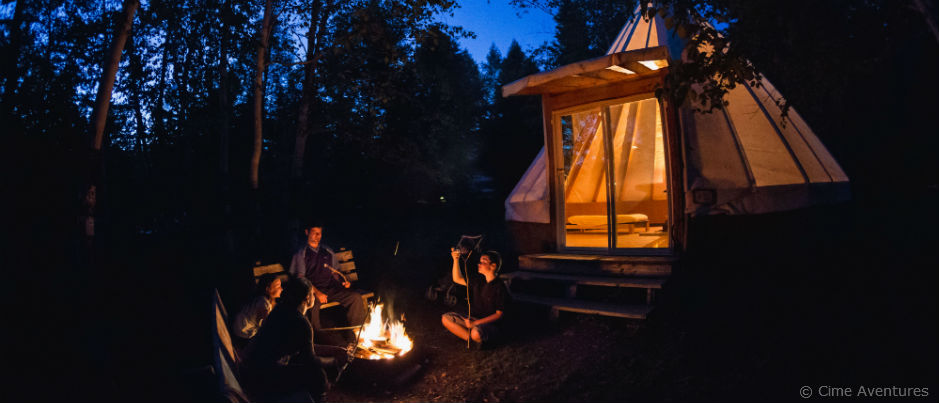
A few villages along the way also have names with Mi’gmaq origins: Paspébiac (from ipsigiag, meaning “barachois” or “lagoon”) and Shigawake (michigonac, meaning “white water”), for example. To immerse yourself further in Indigenous culture, why not sleep in a teepee at Cime Aventures, on the banks of the Bonaventure River?
Land’s End
Before heading to the next Indigenous community, be sure to stop and visit the Percé UNESCO Global Geopark. In the summer of 2019, the names of the geopark’s trails and geosites were translated into the Mi’gmaq language to mark the International Year of Indigenous Languages.
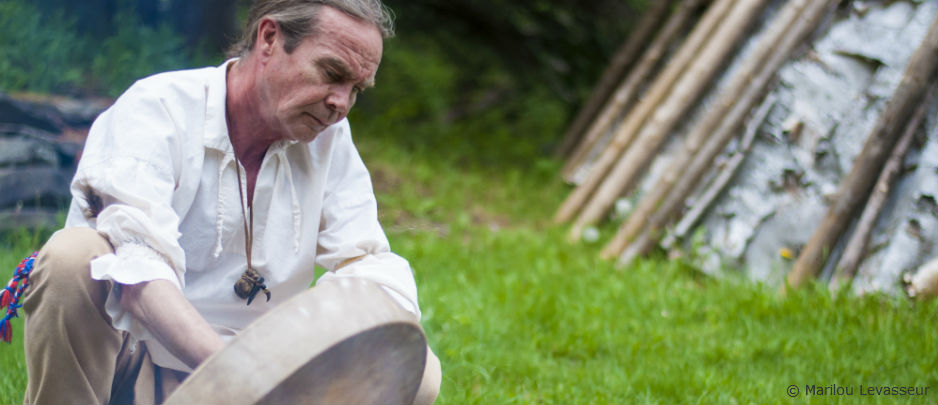
The third Mi’gmaq community in Gaspésie is located at the tip of the peninsula, in Gaspé, and is called Gespeg, which means “land’s end.” The Gespeg First Nation is a community without an assigned reserve; however, you can visit the Micmac Interpretation Site of Gespeg where a faithful reconstruction of a traditional 17th-century village awaits you. Join a guided tour to discover the Mi’gmaq way of life at that time and see wigwams, fire rings, hunting traps and other objects. End your visit with a stop at the workshop-boutique, which showcases authentic Mi’gmaq crafts.
Haute-Gaspésie
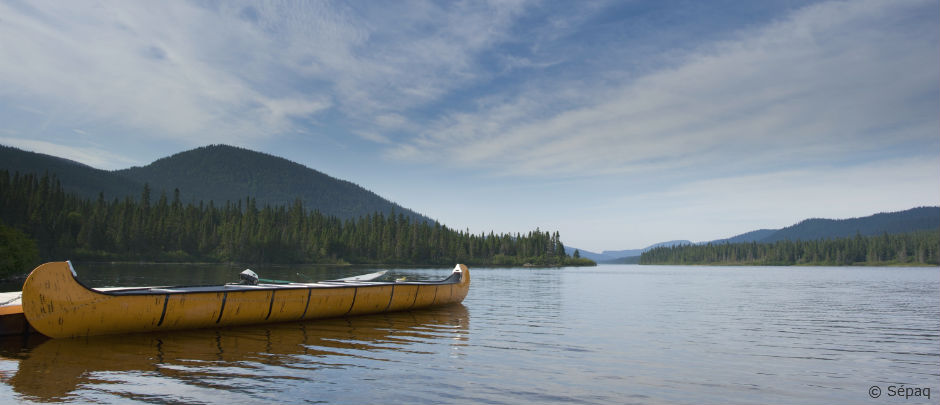
On the north shore of Gaspésie are the Chic-Choc Mountains, which are named after the Mi’gmaq word sigsôg, meaning “steep rocks” or “impenetrable barrier”—an apt description for the end of the Appalachian chain. Today, Parc national de la Gaspésie offers you the opportunity to admire a sunset in a rabaska, a large family canoe, on Lake Cascapédia or to encounter wildlife species that have lived alongside the Mi’gmaq: moose, black bears, caribou, etc.
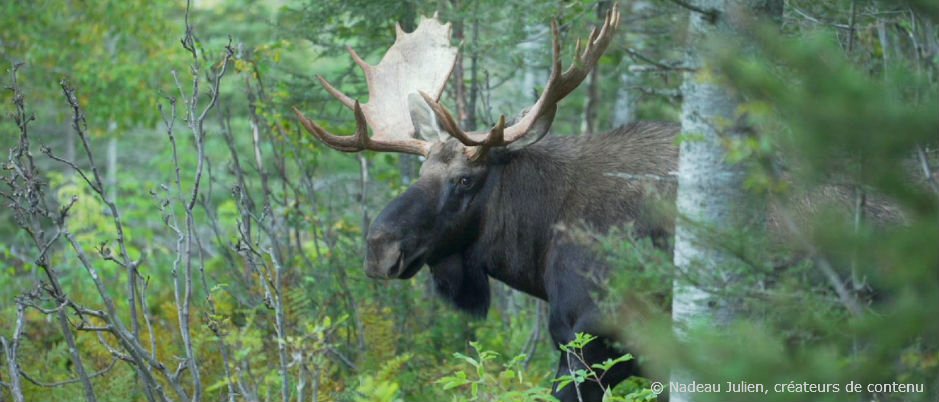
The Coast
Following Route 132 back towards Bas-Saint-Laurent, you’ll drive through the village of Les Méchins, whose name originates from a Mi’gmaq legend. The evil genius Outikou is said to have haunted the mountain in the form of a monster named Matsi, which means “wicked” in Mi’gmaq. The monster, who was 2.5 metres (8 feet) tall, terrorized the locals with a stick the size of a tree trunk. Over time, the French translation for “wicked” (méchant) morphed into méchin. Matane, on the other hand, was long frequented by the Mi’gmaq of Baie-des-Sables, who hunted beavers here. The name of this town comes from the word mictan, which means “beaver pond.” For a long time, this place would have been an important stopover for the Mi’gmaq to rest and refuel. Later, it was the place of hunting and trade with the merchants of La Rochelle (France). Another Mi’gmaq camp was located near the waterfall on the Tartigou River in Saint-Ulric, which comes from the Mi’gmaq word tlagatigotj, meaning “river of the small settlement.”
Keep your eyes peeled so you don’t miss anything about the Indigenous presence in Gaspésie. Enjoy encountering the Mi’gmaq in this region!
The Mi’gmaq (also spelled Mi’kmaq) are an Algonquian-speaking people living on the south shore of the St. Lawrence (in Gaspésie) as well as in the Atlantic provinces.
Please note that the translations of terms from Indigenous languages found in this blog post are based on a variety of sources and that other translations or interpretations may exist. Much of the information in this post comes from the Commission de la toponymie du Québec website.
(1) comment
Lynn
in 1965 my parents took our family to the Gaspe'. I remember near the side of the road First nations people were selling wooden toy boats. the sail was made of birch and the hull for wood. My mom threw them away. Trying to replace it with similar. Any ideas.
Bonjour Lynn, Unfortunately, we don't know where to find these little boats, but you could contact the Micmac Interpretation Site of Gespeg. They have a nice little gift shop to purchase souvenirs made in the traditional way.